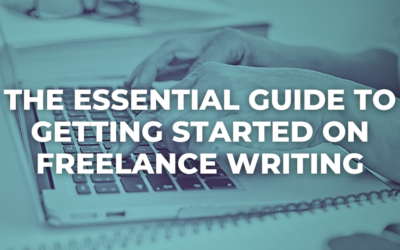Recently, I wrote about how to give an effective design critique. This week, I’m turning it around and focusing on how to get the most out of a design critique. Getting feedback on your work takes time, so you need to make sure you’re making the most of it. Follow these guidelines and you’ll be well on your way to making the best use of design critiques.
Separate yourself from your work
It’s easy to take things personally during a design critique. You’re putting something out there that you’ve spent countless hours working on to make it the best you know how, only to have people point out what’s wrong with it. If you think of critique like that, though, you don’t get any real value out of it and you end up with hurt feelings and a design that’s not as good as it could be.
Instead of seeing the work as an extension of yourself, separate the yourself from the work. When someone points out a flaw or something they think you need to change, don’t take it personally. Instead take their feedback and use it to make your work better.
This was, and often still is, difficult for me to do. One thing that helped me get better about keeping myself out of critique was to share my work early and often. Instead of spending a ton of time making sure every detail was perfect, I started sharing my work at any point that I needed feedback, whether it was perfect or not (hint: It will never be perfect, there will always be something you can improve). The more I’ve done this, the more comfortable I’ve become with sharing my work, no matter what stage it’s in.
Don’t make excuses
Something I’ve seen happen a lot during a design critique is the person having their work critiqued tries to explain every decision they made or what they’re trying to accomplish with the piece of the their work that was just critiqued. Instead of listening and taking notes, this person spends most of the time trying to prove that their decision was the right one.
The point of a critique isn’t to convince everyone that your work is perfect, because it’s not perfect. The point of a critique is to get the feedback you need to make your work better. There’s no need to explain why you used a certain typeface after someone says the type is hard to read, or explain exactly why you put a button where you did after someone says they couldn’t find it quickly. If you try to make excuses for every critique you get, people are going to be less willing to give you any feedback at all.
Now, that said, that doesn’t mean you can’t explain constraints you’re working in. For example, you can explain that you can’t make the text green because it’s printing in spot color, or that the colors you’re working with are set in stone by your client, an organization or the government (this happened to me on a recent project). If people understand the constraints you’re working in, they’ll be able to better help you figure out how to make your design work in those constraints.
Ask questions
If you’re getting feedback from someone that you’ll use to make changes to your work, you need to make sure you know what that feedback means. If you don’t understand the critique that someone gave, ask them about it. Whether you ask them to go into more detail about what they mean or ask what brought them to that particular conclusion, asking questions is great way to dig deeper and keep everyone, including yourself, more engaged.
Questions can also be a good alternative to excuses and explanations. When someone gives you critique, try asking a question instead of blurting out the reason why you made that design decision. You’ll get much better feedback this way and can come away from the critique with a solid direction to go with your work.
Don’t take one person’s opinion as fact
After a design critique, you usually come away with a lot of feedback and suggestions on how you can change and improve your work. Before you put any of these ideas into action, though, make sure they’re actually good ideas. Just because an idea comes from a designer that you respect doesn’t mean that it’s something you should do.
If you ask 10 different people to design something, they’ll all produce something completely different. They may all work and all be good designs, but every designer has their own way of doing things. Think about how ideas would fit into your design and what you’re trying to achieve or the problems you’re trying to solve.
And, to be frank, not all ideas are good ideas. Some ideas are just bad ideas. The people critiquing your work probably haven’t put in nearly as much time thinking about what your designing as you have. Learn to separate good ideas from bad ones so that you’re improving your work, not making it worse.
The most important thing you can do during a design critique is simply listen. If all you do is listen and take note of what people are saying, you’ll get what you need.





0 Comments